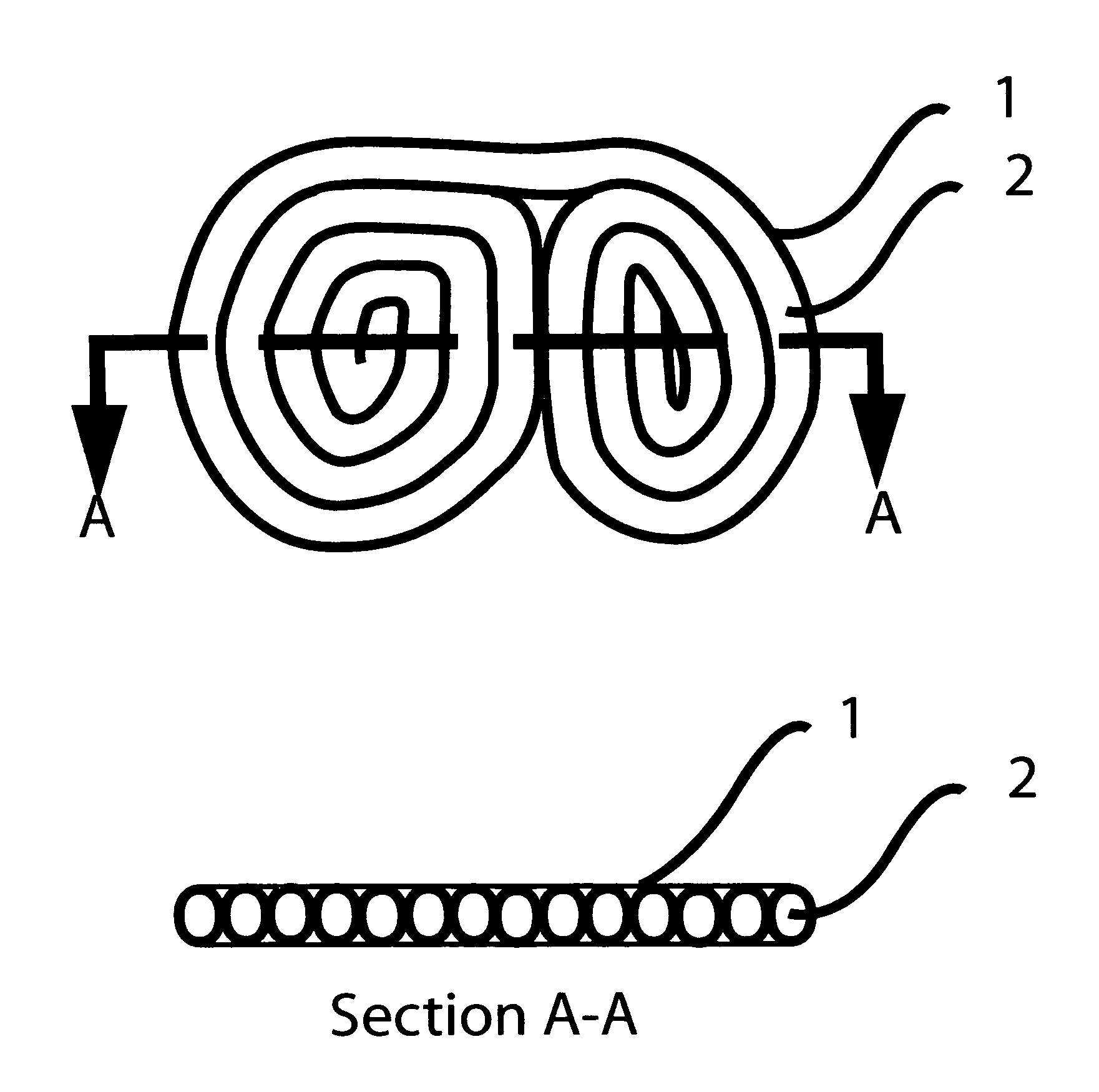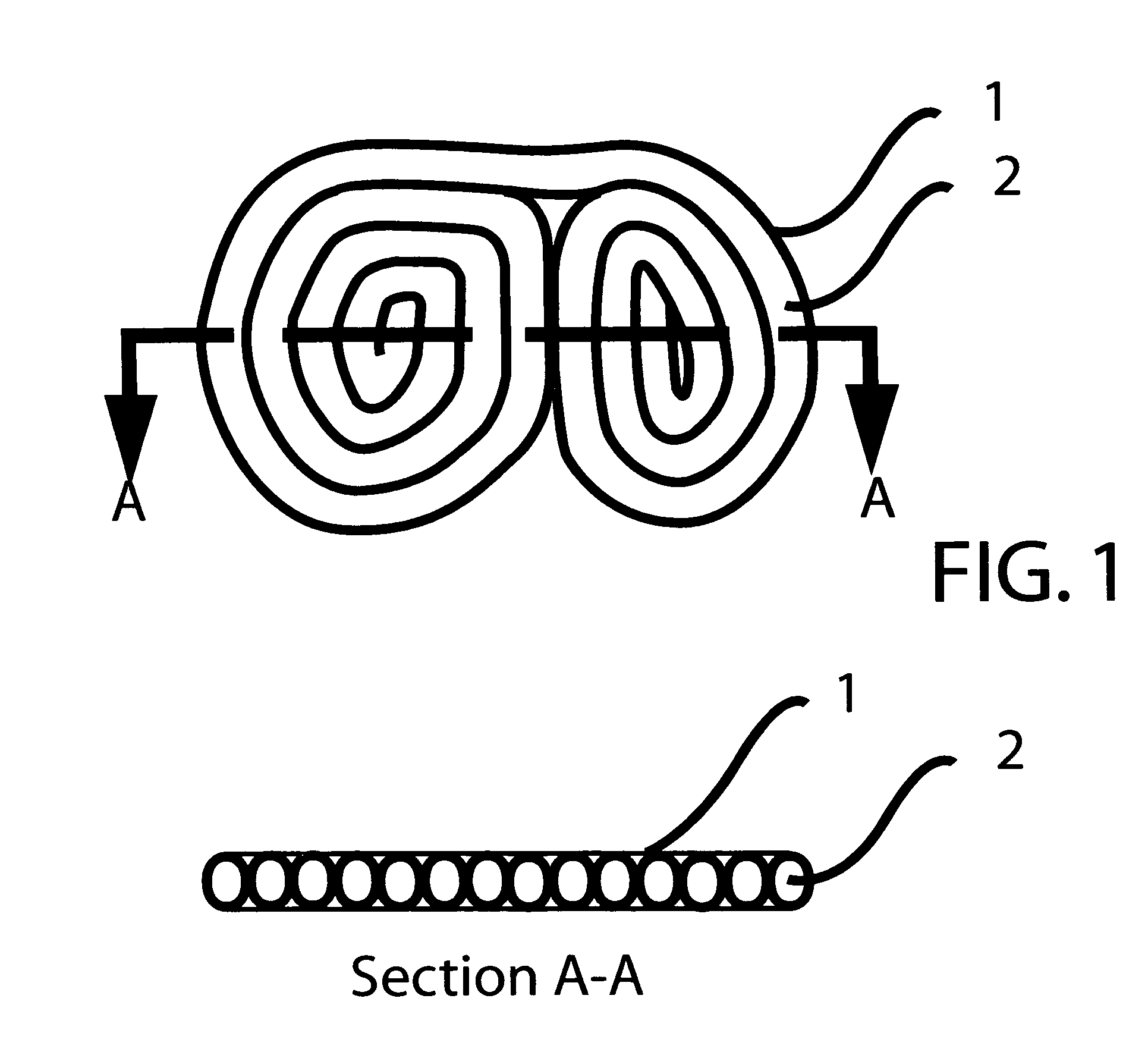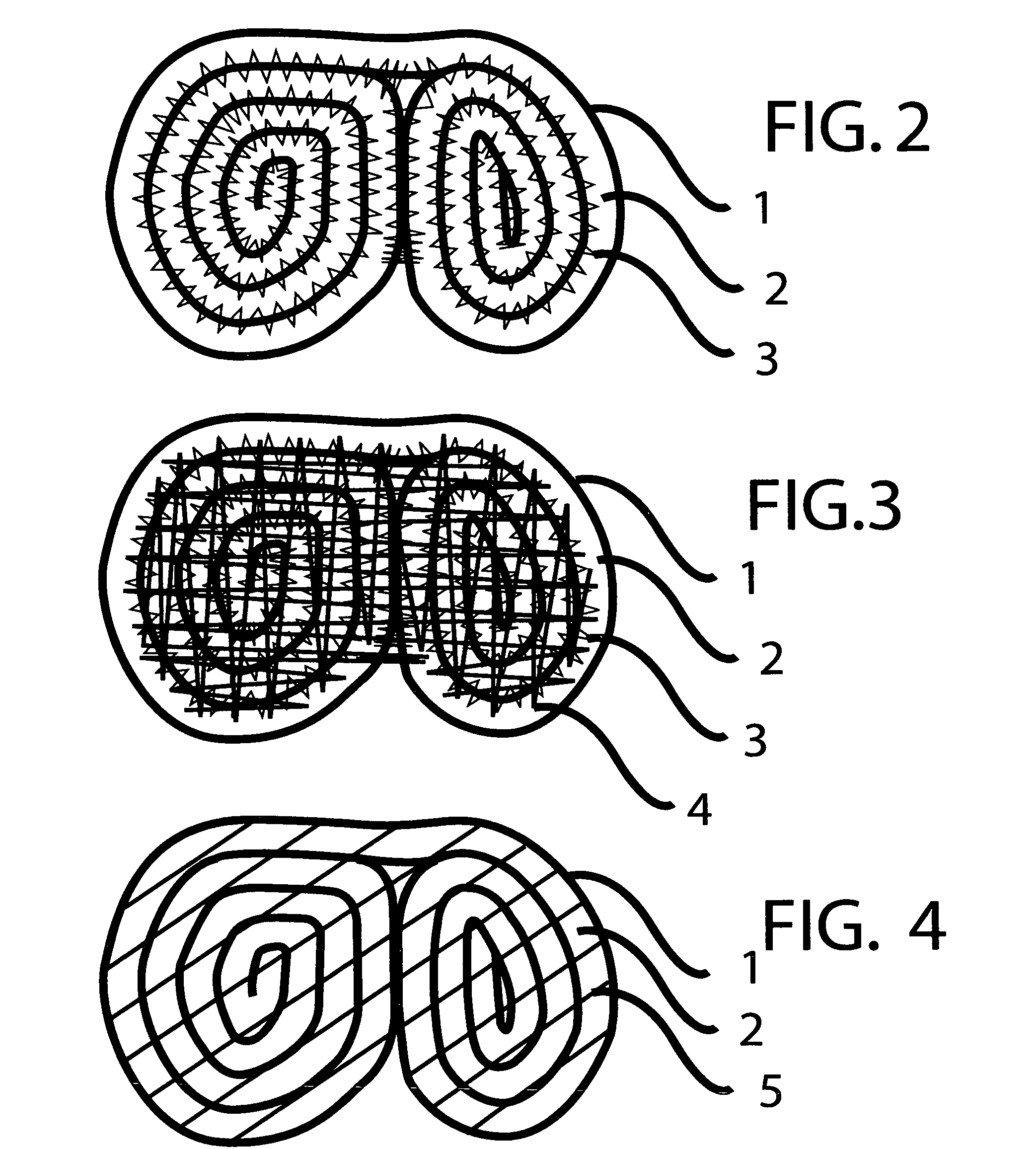Flexibly compliant ceramic prosthetic meniscus for the replacement of damaged cartilage in orthopedic surgical repair or reconstruction of hip, knee, ankle, shoulder, elbow, wrist and other anatomical joints
a ceramic prosthesis and flexible technology, applied in the field of surgical implants, can solve the problems of failure, broken or fractured ceramic prostheses that require surgical replacement, and the current attempt to produce successful ceramic prostheses for knees, ankles, shoulder joints, etc., and achieve the effect of prolonging the life of the joint and long wearing
- Summary
- Abstract
- Description
- Claims
- Application Information
AI Technical Summary
Benefits of technology
Problems solved by technology
Method used
Image
Examples
Embodiment Construction
[0055]The flexibly compliant ceramic fiber prosthetic meniscus construction described in this invention is somewhat compressible and is continuously flexible so as to fit and match the surfaces of the bone ends of an articulating anatomical joint so as to evenly distribute body loads onto the bones of that joint regardless of the positions of the bone ends within that joint. This evenly distributed loading eliminates severe point-of-contact-surface-loads which may be caused by a fall, an accident, or by other means, which can fracture or otherwise damage solid ceramic surfaced prosthetic components which must then be surgically replaced. This ceramic fiber prosthetic meniscus construction provides the desirable long wearing characteristics of ceramics and also absorbs and distributes body fluids to lubricate and further extend the life of the joint. Deterioration of the bone tissue caused by the presence of polyethylene “macrophages” is no longer an issue since no polyethylene is pr...
PUM
| Property | Measurement | Unit |
|---|---|---|
| flexible | aaaaa | aaaaa |
| melting temperature | aaaaa | aaaaa |
| molecular weight | aaaaa | aaaaa |
Abstract
Description
Claims
Application Information
 Login to View More
Login to View More - R&D
- Intellectual Property
- Life Sciences
- Materials
- Tech Scout
- Unparalleled Data Quality
- Higher Quality Content
- 60% Fewer Hallucinations
Browse by: Latest US Patents, China's latest patents, Technical Efficacy Thesaurus, Application Domain, Technology Topic, Popular Technical Reports.
© 2025 PatSnap. All rights reserved.Legal|Privacy policy|Modern Slavery Act Transparency Statement|Sitemap|About US| Contact US: help@patsnap.com



